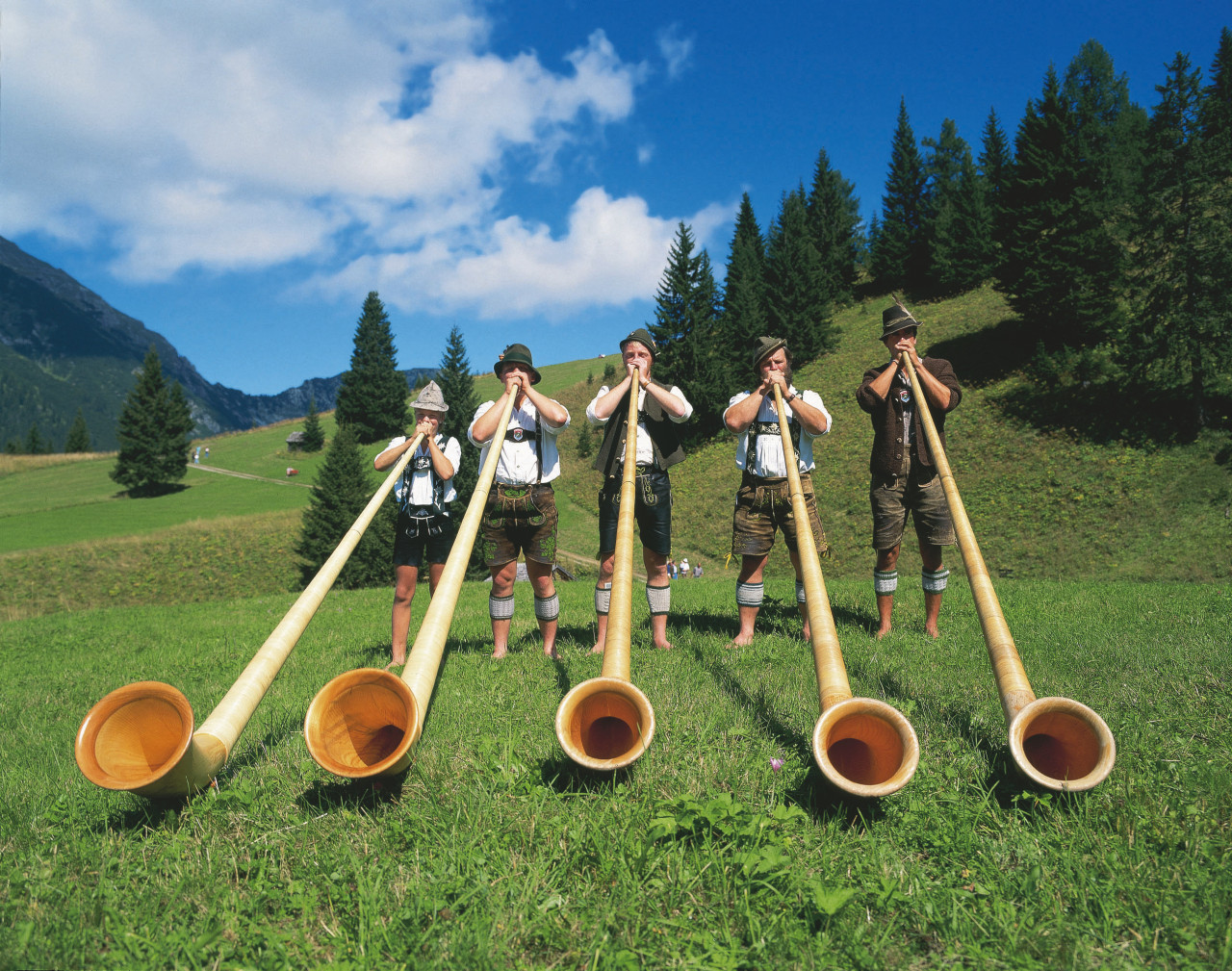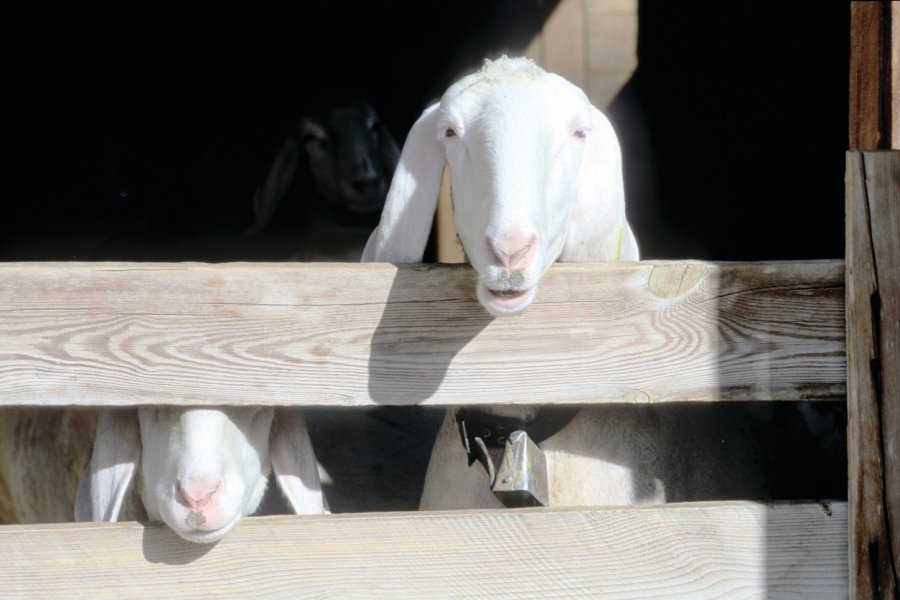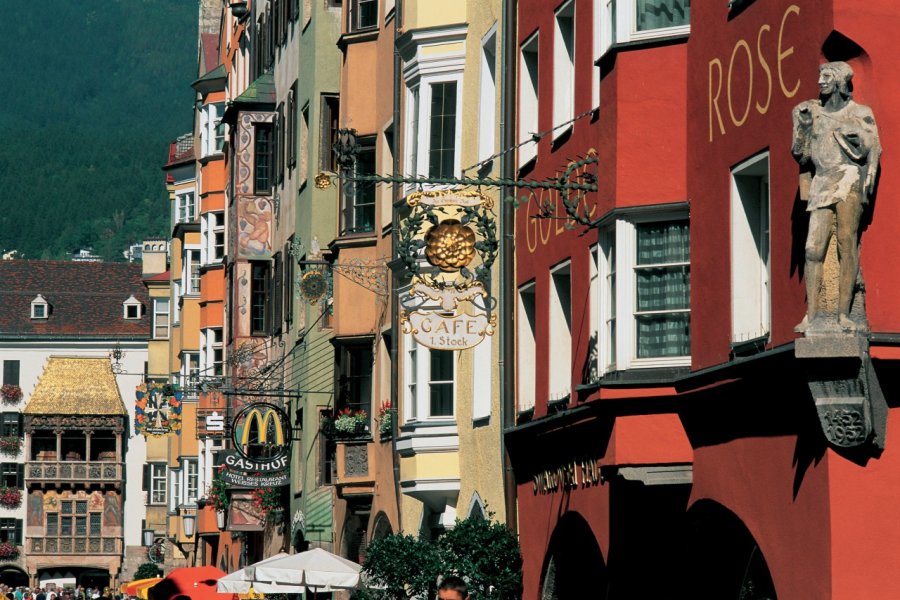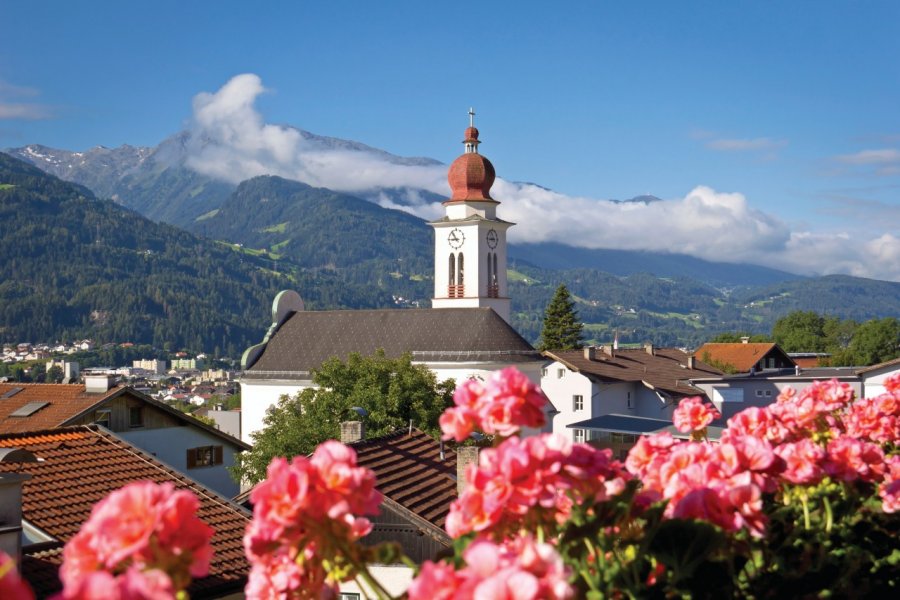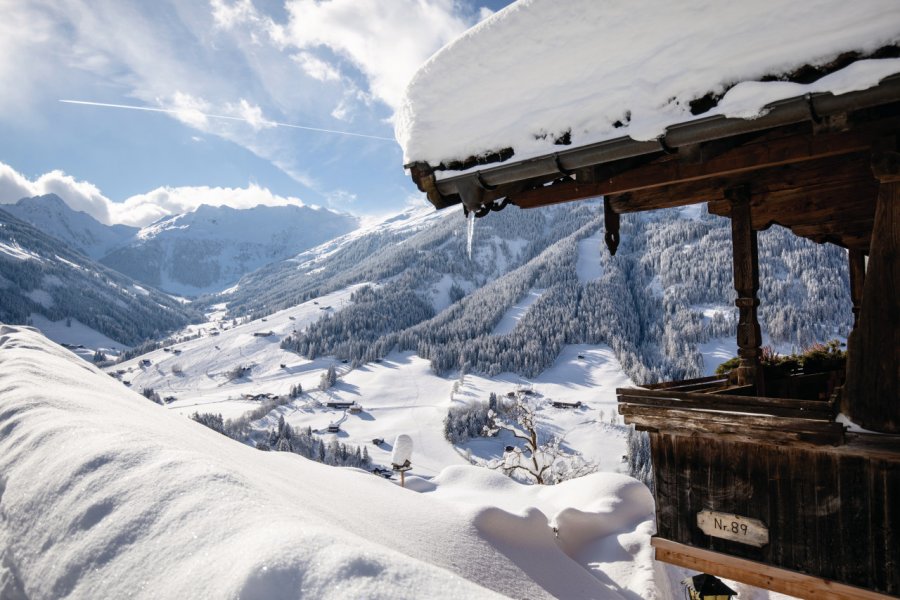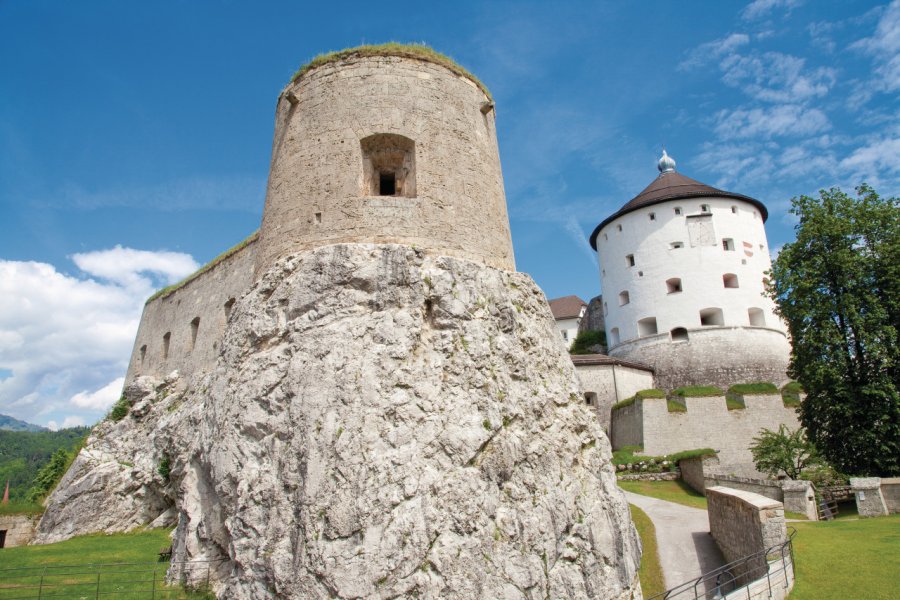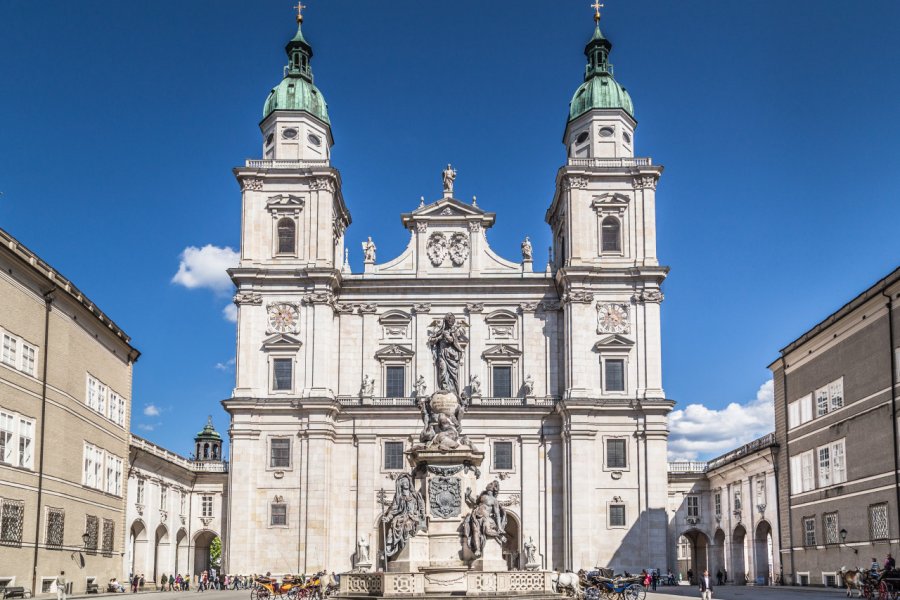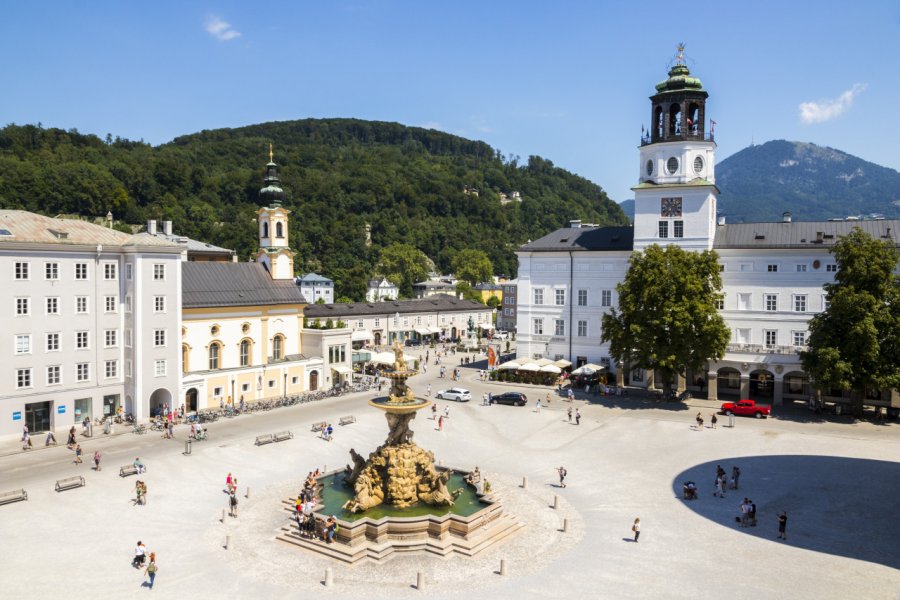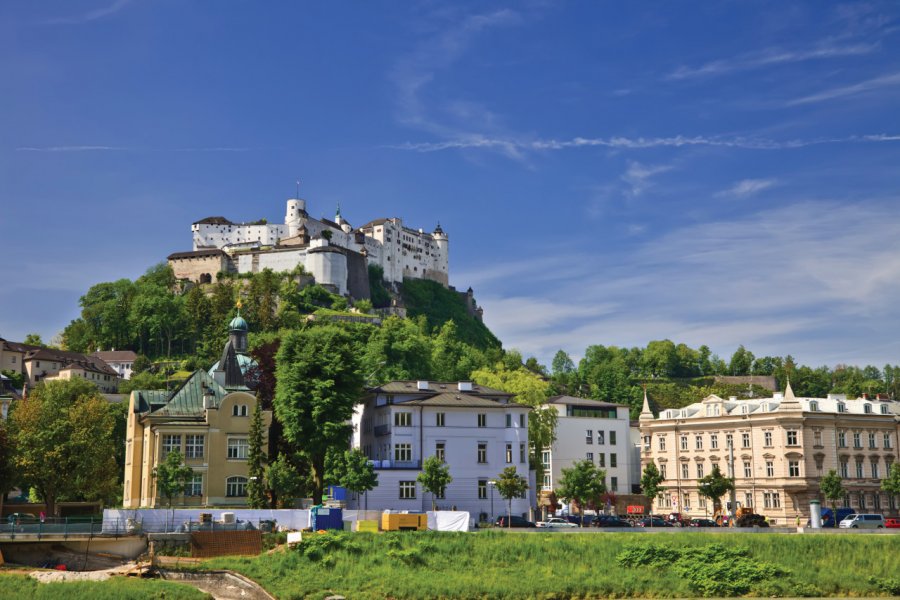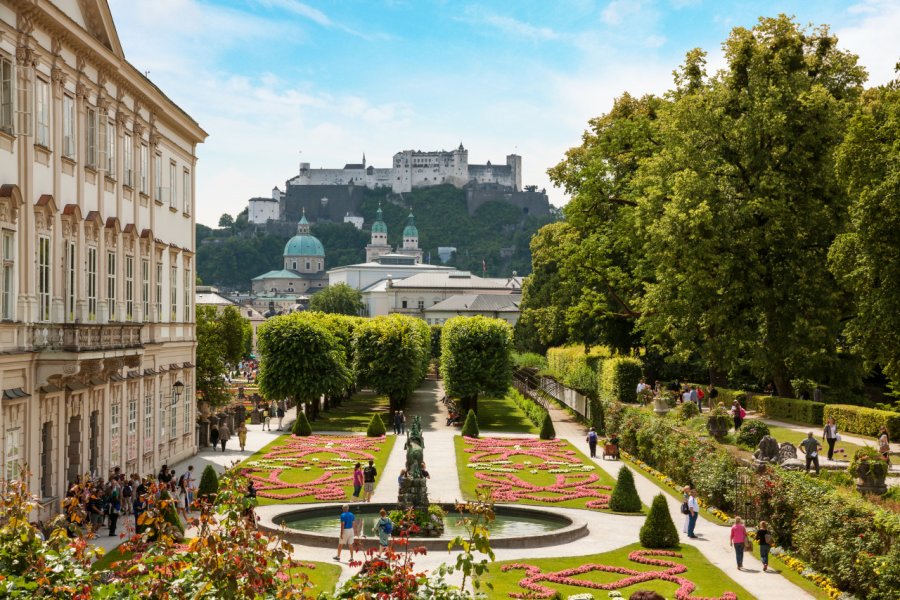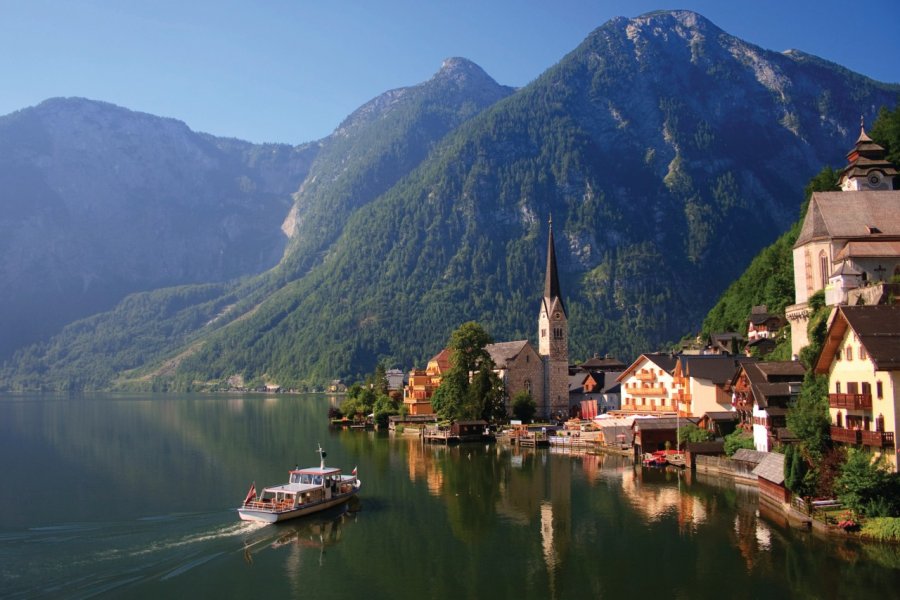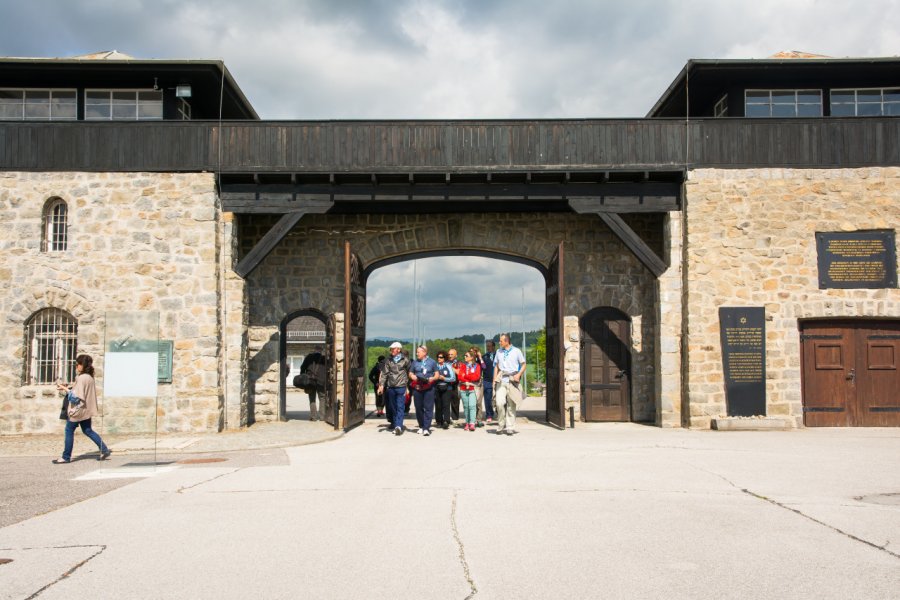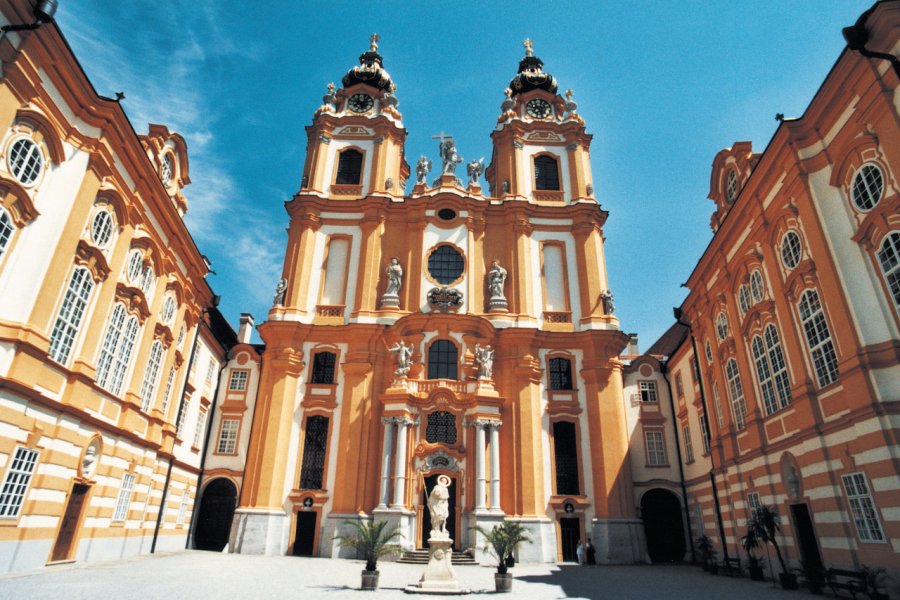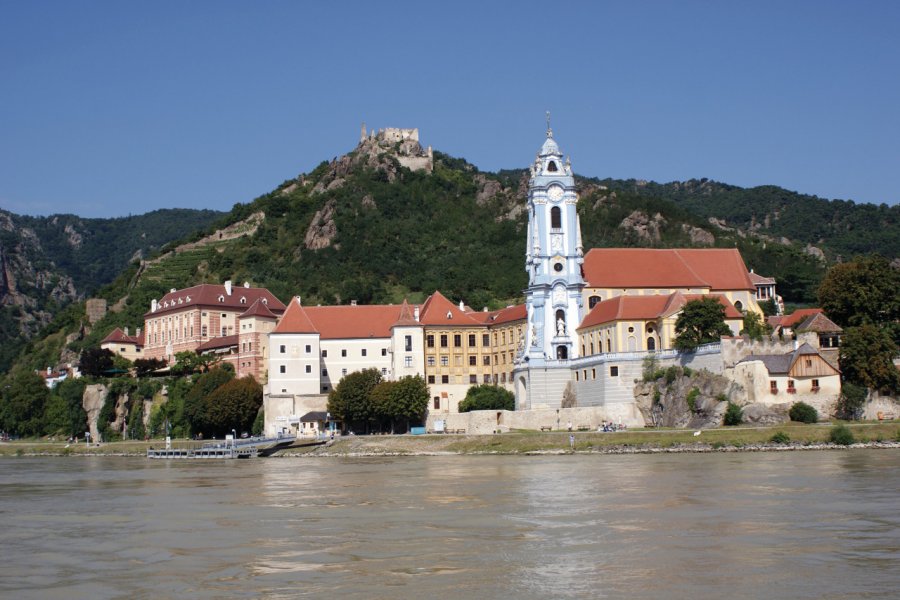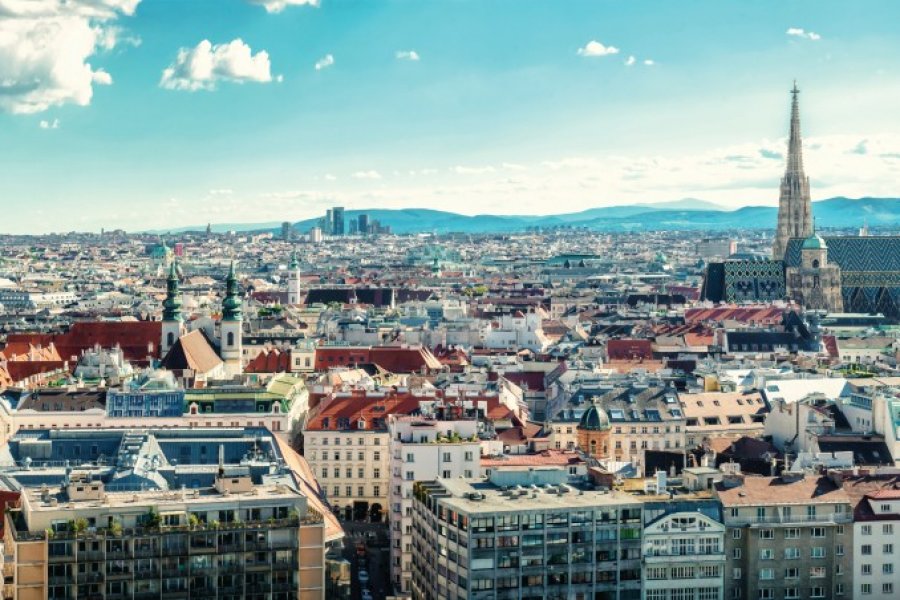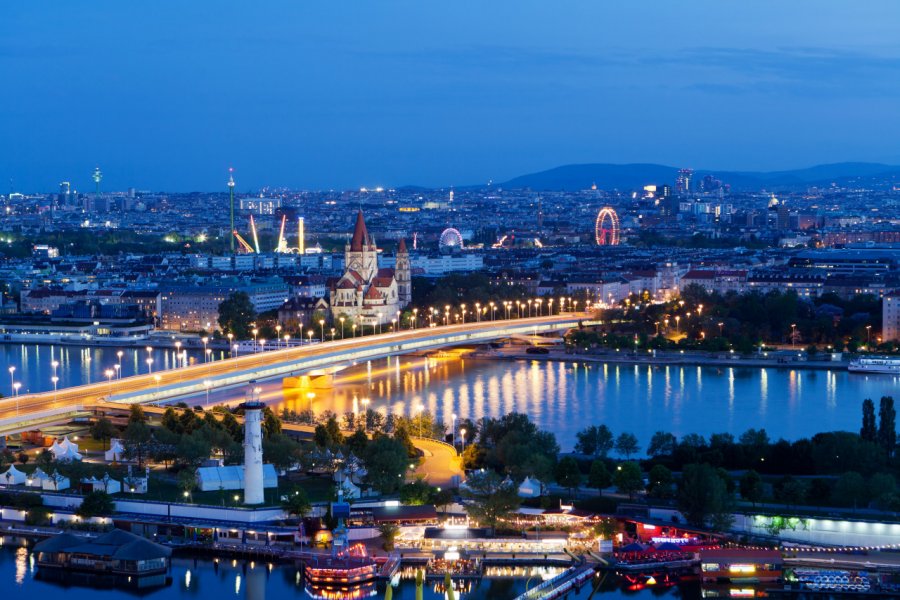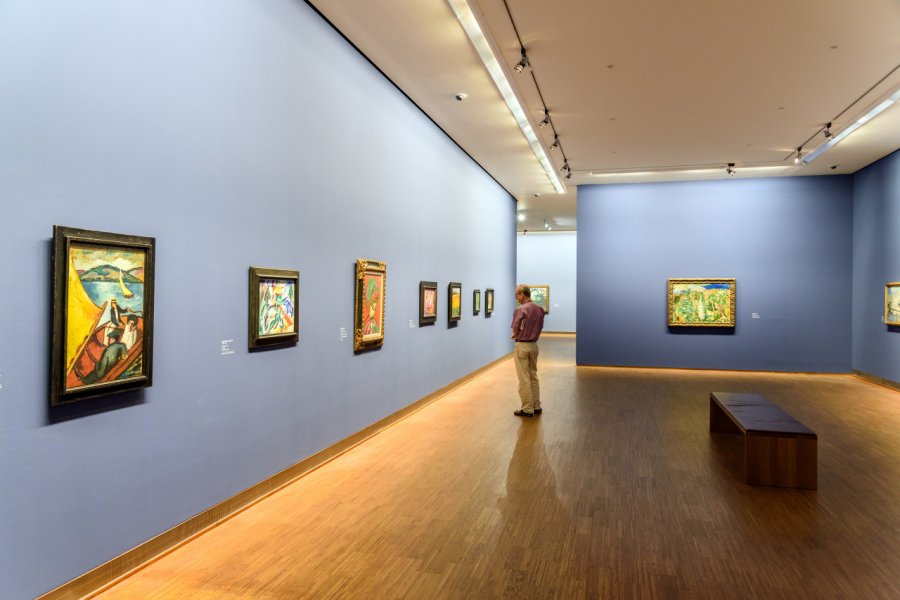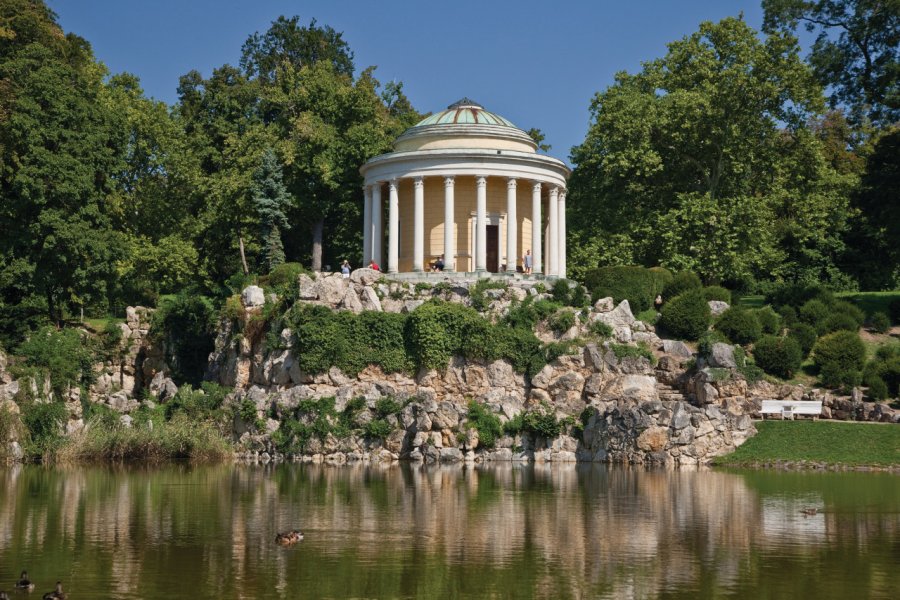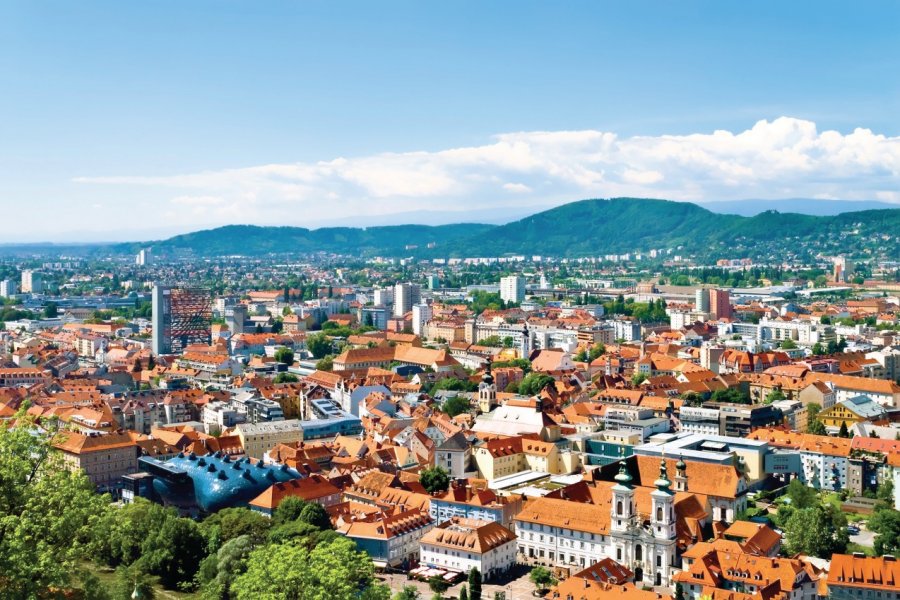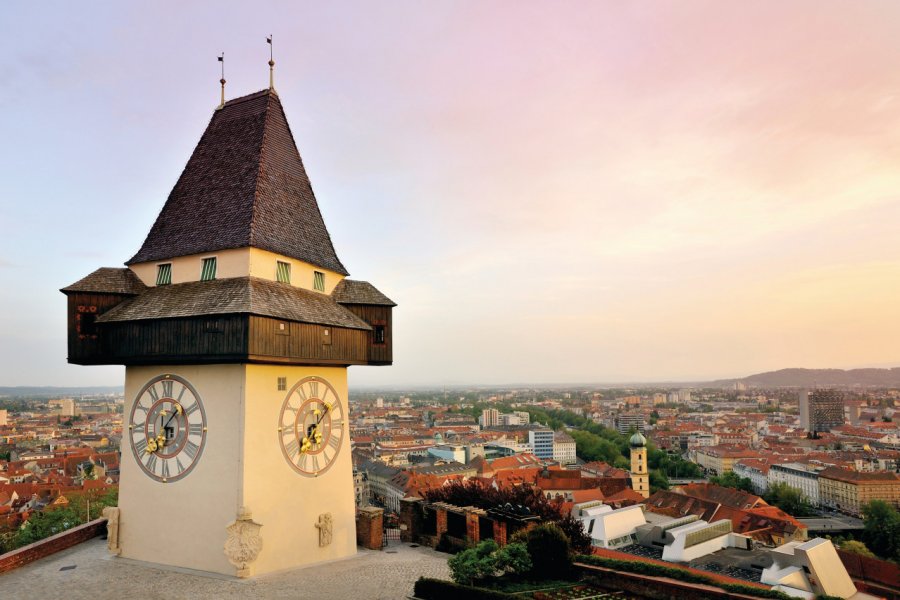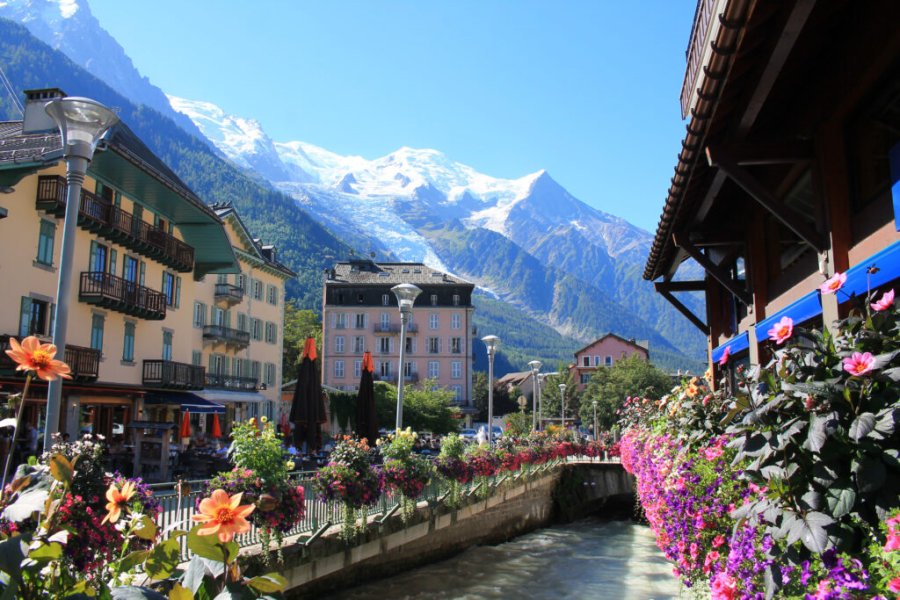One month to discover the Austrian regions
Highlights of the trip
During your stay you can enjoy the following highlights: Culture / Heritage, Faune and flora, Discovery, Adventure / Sports & Leisure, Relaxation / Well-being.
Best times to go
The best time(s) to go is/are : Printemps, Eté.
Petit Futé
Where to stay in : Mieming ?
The map of your stay "One month to discover the Austrian regions"
Detail of the stay : One month to discover the Austrian regions
How to get there - Mieming
Tyrol

Steps: Innsbruck
Between the border and the city of Innsbruck, Imst, the city with its many fountains and Romanesque figures, bears witness to the strong Christian culture of Tyrol. A must stop in the area: Stams Abbey. This Romanesque building - former burial place of the Tyrolean princes - is famous for its Rose Gate and Heilig-Blut Chapel.
Places of interest : ABBAYE DE STAMS (STIFT STAMS)
Innsbruck

Steps: Innsbruck
In the heart of the Alps, Innsbruck is the administrative and intellectual capital of Tyrol. Its old town is interesting for several reasons. The ideal starting point for our stroll, the Marie-Theresien-Straße, from which we can see the Nordkette, abounds in palaces from the 17th to 18th centuries. The number of monuments being considerable, walk according to your desires, without forgetting the imperial castle, the cathedral of Saint-Jacques and the tomb of Maximilien. Then, to relax, stroll through the Hofgarten, the Habsburg garden, or have a drink at the Linde café, which can be reached by funicular.
Places of interest : PALAIS IMPÉRIAL (KAISERLICHE HOFBURG) JARDIN IMPÉRIAL (HOFGARTEN) CATHÉDRALE SAINT-JACQUES (DOM ZU SANKT JAKOB) MARIA-THERESIEN-STRASSE VIEILLE VILLE
Innsbruck (bis)

Steps: Innsbruck
From Marie-Theresien-Straße, a bus can take you to Ambras Castle, a masterpiece of the Austrian Renaissance, in a few minutes, for which you should book half a day.
Places of interest : MARIA-THERESIEN-STRASSE CHÂTEAU D'AMBRAS (SCHLOSS AMBRAS)
In the vicinity of Innsbruck

Steps: Friedberg
Along Haller Straße begins the Mittelgebirge circuit, literally a medium mountain circuit. On the way, Hall in Tirol, a small town typical of medieval Tyrol, then Volders, which houses Friedberg Castle (only open in summer).
Places of interest : CHÂTEAU DE FRIEDBERG (SCHLOSS FRIEDBERG)
Région Region

Steps: Alpbach
In the Inn Valley, Alpbach is a charming village with typical Alpine cottages. Rattenberg, a medieval town perfectly preserved, also deserves a visit. Among the oldest medieval cities in Austria, it is famous for the fortress of Schlossberg and the picturesque of its alleys.
Places of interest : SCHLOSSBERG
Kufstein

Steps: Kufstein
Called the "pearl of Tyrol", Kufstein is dominated by its huge fortress, the Festung, whose tower of the Emperor offers a superb panorama of the Austrian Alps.
Places of interest : FORTERESSE DE KUFSTEIN (FESTUNG KUFSTEIN)
Salzburg

Steps: Salzburg-Salzbourg
Rightly dubbed the Rome of the Alps, Salzburg has the unity and charm of Italian cities. Rich in monuments, this city with soft colours that saw Mozart's birth is worth three days.
Places of interest : MAISON NATALE DE MOZART (MOZARTS GEBURTSHAUS)
Escapades in the Salzkammergut region

Steps: Salzburg-Salzbourg
The surrounding area of Salzburg has natural beauties including the lakes of Wolfgangsee, Attersee and Nestled. These three lakes offer tourists beautiful hiking and bathing. Take a couple of days to get to the two.
Day for Lakes

Steps: Hallstatt
With its hugging maisons around the lake, Hallstatt village in the Salzkammergut is inscribed on UNESCO's World Heritage List. This site, which gave its name to the civilisation of Hallstatt (iron age), is also known for its salt mines. It is still a village of singular charm.
Village of Hallstatt

Steps: Hallstatt
With its hugging maisons around the lake, Hallstatt village in the Salzkammergut is inscribed on UNESCO's World Heritage List. This site, which gave its name to the civilisation of Hallstatt (iron age), is also known for its salt mines. It is still a village of singular charm.
Linz

Steps: Wilhering
On the way to Upper Austria's capital, stop for a few hours at the site of Wilhering Abbey Church. Linz, located at the crossroads of the Danube Valley and the Salt Road, is a great place to live, so it would be a shame not to stay there for at least two days. On the programme: the 8th century castle, the 19th century neo-Gothic cathedral, the old town hall.
Places of interest : MUSÉE DU CHÂTEAU (SCHLOSSMUSEUM) ABBAYE DE WILHERING (STIFT WILHERING)
Strolling around Linz

Steps: Linz
Walking in the streets of Linz, Austria's third largest city, is a pleasure. Architecture lovers will be delighted here. On the mouth side, Landstraße, in the city centre, is an inexhaustible mine for gourmets, with so many restaurants. Not to be missed is the famous Linzer Torte, a local pie whose recipe dates back to the 17th century.
Around Linz

Steps: Mauthausen
After a walk in the linzois country, you can get to the site of the Mauthausen concentration camp.
The Danube Valley

Steps: Melk
Perched on a rock overlooking the Danube, Melk Abbey symbolizes the golden age of Austrian Baroque. The city of Krems, on the opposite side of the river, is the wine centre of the Wachau, as shown by its wine museum and the monastery's oenological college.
Places of interest : ABBAYE BÉNÉDICTINE DE MELK
Dürnstein

Steps: Dürnstein
A small town of less than 1,000 inhabitants that is also worth a visit: after a short climb through its vineyards, stop at the Augustins Abbey
Arrival in Vienna

Steps: Vienne
A city of art, symbol of the empire's prosperity, Vienna is nowadays a dynamic and welcoming city. Due to the immense diversity of its monuments and attractions, the capital can hold you for three good days. The first half-day allows you to discover the architectural showcase of the capital: the Ring. The buildings that line the circular boulevard, including the National Opera, the Hofburg Palace, the major museums (Fine Arts and Natural History), the Parliament, the Great University, the Town Hall, the Votive Church, reflect the Baroque and Historic periods. Then, enter the city centre, the Innere Stadt (1st district) to stroll through the oldest streets of the capital. In its heart, rises more than 300 m in the sky the Cathedral of St. Stephen (Stefansdom), a marvel of the Gothic age. If it is not too late, visit the Albertina, the great museum of the centre which houses a unique collection of art (impressionists, expressionists, drawings and engravings of the Renaissance...) collected by Prince Albert of Saxony-Teschen and his wife Marie-Christine, daughter of Marie-Thérèse. The building alone is worth a look.
Lunch in a Beisl: a typical popular restaurant where the daily menu, cheap, must be accompanied by a beer or a local wine.
After lunch, head for the Museumsquartier in the 7th arrondissement. Opened in 2001, it is one of the largest museum complexes in the world! You can choose to visit the Leopold Museum, where Austrian art is particularly prominent (you will find works by Gustav Klimt and Egon Schiele), or from Mumokmusée d'Art contemporainthe surprising architecture (grey basalt) which, through its collection, traces various trends in modern and contemporary international art: Pop Art, Arte Povera, Viennese actionism, etc.
After the visit, we will stroll through this unique complex organized around the vast courtyard of the former imperial stables, and why not have a drink on the roof of theMumok, to see Vienna from above? Then you can stroll through the pretty streets of the 7th arrondissement, in the small Biedermeyer district of Spittelberg. Dinner in a restaurant in the city centre to taste, for example, Tafelspitz with Austrian wine.Places of interest : HÔTEL DE VILLE (RATHAUS) COMPLEXE DE LA HOFBURG CATHÉDRALE SAINT-ÉTIENNE (STEPHANSDOM) UNIVERSITÉ DE VIENNE ÉGLISE VOTIVE (VOTIVKIRCHE) ALBERTINA MUSÉE D'HISTOIRE NATURELLE PARLEMENT DE LA RÉPUBLIQUE D'AUTRICHE OPÉRA NATIONAL (WIENER STAATSOPER) MUSÉE D'ART MODERNE (MUMOK) MUSEUMSQUARTIER SPITTELBERG LEOPOLD MUSEUM
Vienna's must-sees

Steps: Salzburg-Salzbourg
In the morning, breakfast in a Viennese café in the city center: on the menu, coffee and delicious pastries. Here they are called Mehlspeisen. Then visit the Secession side of Vienna (Art Nouveau): on the beautiful Naschmarkt market, with a view ofOtto Wagner's majolica house. Walk up Friedrichstraße to see the Secession Pavilion, which contains the famous Beethoven Frieze by Klimt. Then continue to Karlsplatz to see Otto Wagner's subway pavilions
. Then visit the St. Charles Church, a Baroque masterpiece. Lunch in a restaurant in the 4th or 1st district, such as a café or brasserie. In the afternoon, departure for Schönbrunn, summer palace of the Habsburg dynasty, a sort of Austrian Versailles: a large castle with breathtaking ceremonial rooms (furniture, marquetry, frescos, imperial apartments). It is here that Sissi, Franz Joseph and their children spent their happy days. The estate also includes splendid gardens in which we will stroll for the rest of the afternoon, if the weather is good. Otherwise, the visit continues in Schönbrunn with the zoo, the royal greenhouses, or the butterfly house! Last dinner either at theOrangery of the castle, with music, or in the city above the roofs of the capital at the restaurant Do & Co, just in front of the cathedral... You can also rush to the outlying villages of Grinzing or Nussdorf to have dinner in a Heuriger, a wine tavern transformed into a casual restaurant. Vienna by night before boarding the plane: 7th district (Burggasse) or in the1st, "Bermuda Triangle". You can also spend an evening at the Opera..Places of interest : PAVILLON OTTO WAGNER CHÂTEAU DE SCHÖNBRUNN OPÉRA NATIONAL (WIENER STAATSOPER) ORANGERIE PALAIS DE LA SÉCESSION NASCHMARKT MAISON DES MAJOLIQUES - MAISON AUX MÉDAILLONS ZOO
From Habsburg to Prater

Steps: Vienne
Visit of the Hofburg Palace. Huge Habsburg winter residence from the Baroque period. It is entered via Michaeler Platz in the city centre and exits on the Ring Road. In addition to the royal apartments and the Sissi Museum dedicated to Empress Elizabeth, which completes them, the sublime National Library and the Imperial Treasures Room offer visits of great interest. Snack in a Würstelstand in the city centre (typical sausage stand) with beer. Afternoon free in the city centre: carriage ride, souvenir shopping on the Graben, the most chic street in the city, more detailed discovery of parks or alleys, especially around Judenplatz. Do not deprive yourself of coffee (at Café Central for example).
Heading for the Belvedere, a museum housed in the splendid palace built for Prince Eugene of Savoy, which houses important works by Gustav Klimt. View of the city. After a little relaxation in the Belvedere gardens. Afternoon at the Prater: Vienna's largest park northeast of the capital was once the emperor's hunting reserve. It houses the famous Ferris wheel, from which, in addition to the sensations, you can enjoy a beautiful view of the Danube city. If you have booked a place in advance (and well in advance!), evening at the Opera House. Otherwise, you can always try to arrive an hour before the performance, hoping to find a seat or standing place at a low price! If you speak German, the Burgtheater is one of the best German-speaking scenes...
Places of interest : COMPLEXE DE LA HOFBURG TRÉSOR IMPÉRIAL GRABEN MICHAELERPLATZ PALAIS DU BELVÉDÈRE BIBLIOTHÈQUE NATIONALE OPÉRA NATIONAL (WIENER STAATSOPER) PRATER ET GRANDE ROUE THÉÂTRE NATIONAL (BURGTHEATER)
Baden
Steps: Baden
Close to Vienna, Baden is a romantic city surrounded by vineyards and meadows. This very popular spa resort offers its visitors rest, sweetness of living and entertainment.
Baden (bis)

Visit of the city and/or spa.
Eisenstadt and Burgenland

Steps: Eisenstadt
In the Burgenland capital, a visit to the centre seems essential, as well as a stroll along the Hauptstraße. On the agenda: Haydn's house, the Schloss Esterházy and its park.
Places of interest : PALAIS ESTERHÁZY (SCHLOSS ESTERHÁZY) MAISON DE HAYDN (HAYDNHAUS)
Lake of Neusiedler

Steps: Mörbisch Am See
The ferry crossing, between Mörbisch and Illmitz, must be accompanied by the visit of these two villages.
Graz

Steps: Graz
You can also visit the old quarter of Graz (famous for their ornate facades) and the castle of Eggenberg.
Places of interest : CHÂTEAU D'EGGENBERG (SCHLOSS EGGENBERG)
Graz (bis)
Steps: Graz
Continuation of Graz's visit with the cathedral and the university, which are among the architectural jewels of the city. For the point of view, go to Schlossberg: from the top of this rock surmounted by a belfry, you dominerez a good part of the city.
Places of interest : SCHLOSSBERG
The surroundings of Graz
Discover Tuscan Styria, in the heart of the hills, along Sausaler Straße, towards Sankt Oswald and Lavamünd.
